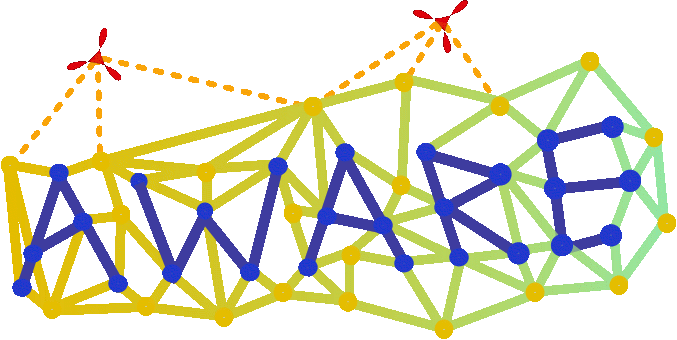|
N . E . W . S
|
| |
18.04.2008
Successful AWARE
experiments 2008.
See the video on the AWARE hompage.
|
| |
20.12.2007
Worldwide first load transportation
using three coupled helicopters.
Watch the video.
Download HQ video. |
| |
28.11.2007
First successful autonomous
load transportation.
Watch the video.
Download
HQ video.
|
| |
|
|
|
|
|
Laboratory for
autonomous flying robots

From
autonomous flying to applications
INTRODUCTION
In our lab, we are working on different subjects connected with
practical applications of autonomous aerial robots with a certain level
of on-board intelligence.
The main research areas are:
- mathematical modeling of small scale aerial
robots
- control of small scale aerial robots
- sensors and sensor data processing for
autonomous navigation
- collision detection/avoidance for small scale
aerial robots
- control of multiple coupled helicopters
- distributed real-time systems
The main applications are:
- load transport with multiple helicopters
- deployment of sensor networks using small scale
aerial robots
- monitoring and observation
For outdoor operation, we use the following aerial robots:
- Three helicopters H-3 (rotor diameter 2 m,
total mass 12-16 kg)
- Plane H-P1 (wingspan 2.5 m, total
mass 15 kg) (under construction)
- Quad-rotor H-Q1 (edge length 1 m, total mass 15
kg) (under construction)
The autonomous navigation of all our flying robots is performed by the
modular control system which was designed and implemented in our lab.
This control system can be used to operate different types of flying
robots: helicopters, quad-rotors and planes. The modular control system
is composed of hardware for autonomous navigation, real-time software
for control and communication as well as of mission software. The
control system can be configured for different types of sensors (e.g.
low cost and high-end navigation sensors) and actuators used on the
robot. Operation of multiple robots is also supported.
To study some issues related to modeling and control we developed a
laboratory setup for aerial robots. This setup allows performing real
flight experiments with VTOL-robots under deterministic conditions with
low effort and costs. This setup is composed of optical system to track
the position and orientation of robots and software framework for
implementing control algorithms and monitoring of all system data (this
software is also a part of modular control system for outdoor robots).
Up to four different VTOL-robots can be used with this setup at the
same time. At the moment, the following robots are used:
- Electrical helicopter (rotor diameter 1.1 m,
total mass 5 kg)
- Electrical quad-rotor (edge length 0.7 m, total
mass 4.8 kg)
We participate
with our autonomous helicopters in the European Union
project AWARE.

|
|
|


